In Sonoma County, you will find 17 American Viticultural Areas (AVAs, or appellations) – each with its own distinctive characteristics.
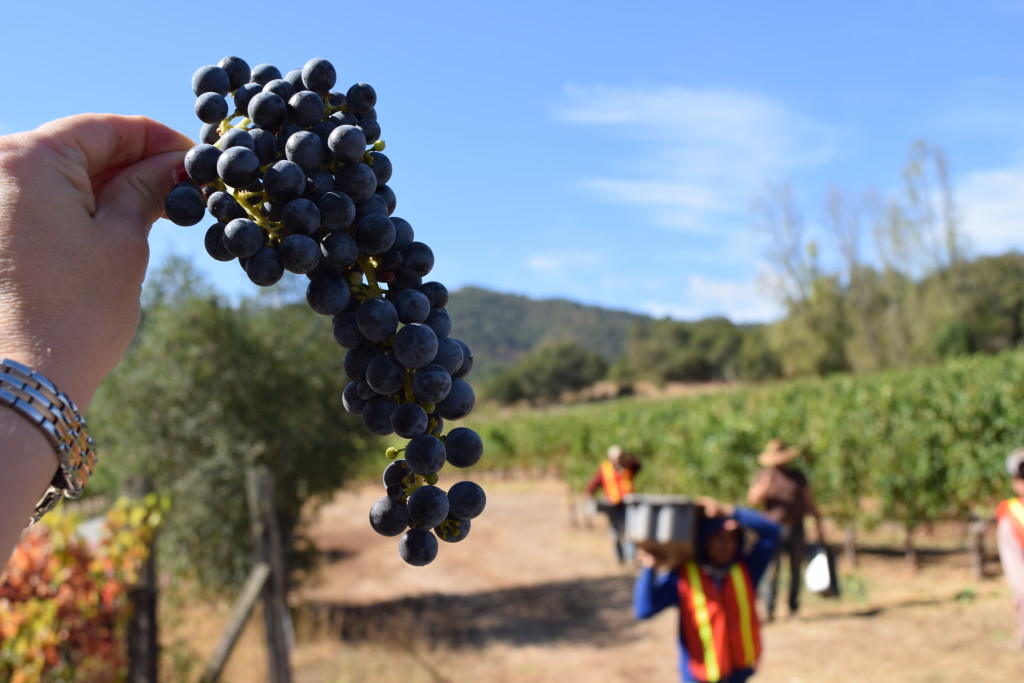
Let’s learn more about what makes each region unique…
According to the Sonoma County Vintners Website… Here are the current details:
Sonoma County Appellations (AVA)
-
Alexander Valley
 15,000 vineyard acres / 42 wineries / AVA status in 1984
15,000 vineyard acres / 42 wineries / AVA status in 1984
The valley is home to more than 40 wineries, each producing distinctive, unassuming wines made by distinctive, unassuming people. Located at the north end of Sonoma County, the Alexander Valley AVA is 22 miles in length and varies in width from two to seven miles. The valley includes the valley floor and hills to the east and west encompassing approximately 76,900 acres, with more than 15,000 currently planted to premium wine grapes. Alexander Valley received federal recognition as an AVA in 1984.
Gravel filled soil that produces some of the county’s richest Cabernet Sauvignon, along with flavorful, ripe Chardonnay. The Valley’s hillsides produce complex and concentrated Zinfandel, Merlot, and Cabernet Sauvignon. -
Bennett Valley
 650 vineyard acres / 4 wineries / AVA status in 2003
650 vineyard acres / 4 wineries / AVA status in 2003
Distinctive” is a word that can easily be applied to Bennett Valley Wines. With our early morning summer fog, cool marine breezes and mountain bench location, the wines of our valley deliver the best of what can be achieved with a cool climate location. While Syrah emerged as the first stand-out varietal to capture the attention of winemakers, our crisp whites are making a name for themselves, and a variety of other grapes grown here.
Merlot shines in Bennett Valley like nowhere else, with volcanic-laced, clayey soils and a moderately cool climate that results in extended hang time ideal for the varietal. The long growing season helps maximize flavors and increase concentration, while the cooler temperatures preserve the grape’s natural acidity. -
Carneros – Sonoma
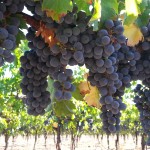 8,000 vineyard acres / 22 wineries / AVA status in 1983
8,000 vineyard acres / 22 wineries / AVA status in 1983
Carneros is located less than 40 minutes from San Francisco, Marin County, the East and North Bays. Sacramento and the South Bay are both just a short distance further. A cool climate appellation, Carneros has long been known for its unassailable Chardonnays, elegant Pinot Noirs and its sparkling wines. In recent years, Carneros has been recognized for the quality of its Syrah, its Merlot and new varietals now emerging throughout the appellation. As inland temperatures rise during the day, moist air over the cold Pacific is drawn inland over Carneros, cooling temperatures from mid afternoon into evening.
Each of the different subsoils substantially changes the environment of a grapevine’s roots, and affect the composition of the fruit. Thus it is no surprise to find diversity in Carneros wines. -
Chalk Hill
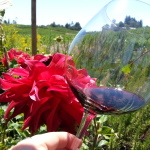 1,400 vineyard acres / 4 wineries / AVA status in 1983 w/revision in 1988
1,400 vineyard acres / 4 wineries / AVA status in 1983 w/revision in 1988
Occupying the northeast corner of the larger Russian River AVA, Chalk Hill is named for its unique, volcanically-derived, chalky white ash soils. These mildly fertile soils lend themselves to the production of excellent whites, particularly Chardonnay and Sauvignon Blanc. Chalk Hill’s five wineries sit above the rest of the valley, on the western benchland slopes of the Mayacamas Mountains, separating Sonoma from Napa.
The appellation enjoys a warmer climate relative to the rest of the Russian River Valley. Due to the higher elevation of this viticultural area, vineyards escape much of the cooling fog that regularly shrouds the lower-lying growing areas near the river.
-
Dry Creek Valley
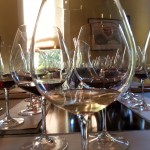 10,000 vineyard acres / 50 wineries / AVA status in 1983
10,000 vineyard acres / 50 wineries / AVA status in 1983
Roughly 9,300 acres of vineyards extend along the valley floor, the surrounding benchlands and hillsides, and 58 wineries produce a diverse selection of wines ranging from the renowned Zinfandels to Bordeaux and Mediterranean varietals. The history of grape growing and winemaking in Dry Creek Valley is among the longest in California, with its roots beginning more than 130 years ago.
Morning fog from the Ocean tempers warm days – good balance of maritime and inland climates. The stone-strewn soils are ideal for concentrating fruit and flavor character of Zinfandel, the hallmark of Dry Creek Valley, along with Cabernet Sauvignon, and the resulting wines are rock solid examples of their types.
-
Fort Ross – Seaview
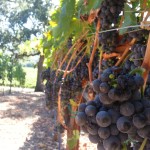 506 acres / Established AVA in 2012
506 acres / Established AVA in 2012
Fort Ross-Seaview American viticultural area is located in the western part of Sonoma County, California contains 18 commercial vineyards, lies close to the Pacific Ocean and is about 65 miles north-northwest of San Francisco. It lies entirely within the Sonoma Coast viticultural area and does not overlap, or otherwise affect, any other viticultural areas. Vineyards within this area are generally located on rounded ridges with summits extending above 1,200 feet consisting of steep, mountainous terrain made up of canyons, narrow valleys, ridges, and 800- to 1,800-foot peaks.
Areas above 900 feet in elevation, the climate is influenced by longer periods of sunlight and is warmer than that in the surrounding land below. -
Fountaingrove District
 500 vineyard acres / 5 wineries / AVA status in 2015
500 vineyard acres / 5 wineries / AVA status in 2015
The Fountaingrove District AVA is Sonoma County’s newest AVA, approved March 2015. This designation recognizes the unique terroir of the region, at the same time filling the AVA “hole” that existed between Chalk Hill and Knight’s Valley to the north, Sonoma Valley to the south, Russian River to the west, and Napa’s Diamond Mountain and Spring Mountain to the east. Vineyards are typically small, ranging from less than 1 acre to 57 acres, with a median size of 12 acres.
Almost all are family-owned. Cab Sauvignon is primary varietal planted, but other Bordeaux varietals (predominantly Cabernet Franc, Merlot) and Rhone varietals (especially Syrah, Viognier, Petite Sirah) also prevalent. In certain microclimates, Zinfandel, Chardonnay and Sauvignon Blanc also flourish.
-
Green Valley of Russian River Valley
 3,600 vineyard acres / 10 wineries / AVA status in 1983
3,600 vineyard acres / 10 wineries / AVA status in 1983
Green Valley is one of the smallest appellations in Sonoma County. It lies in the southwestern part of the Russian River Valley, bounded by the towns of Sebastopol, Forestville and Occidental. It is very tightly delineated, both geographically and climatically, and is the most consistent of any North Coast appellation in terms of soil, climate and flavor.
The fog is Green Valley’s trademark. The predominant soil type (60%) of this American Viticultural Area (AVA) is Goldridge soil, the most sought-after type in Sonoma County—especially for Pinot Noir. -
Knights Valley
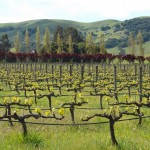 2,000 vineyard acres / 2 wineries / AVA status in 1983
2,000 vineyard acres / 2 wineries / AVA status in 1983
Knights Valley, the most remote of Sonoma County’s appellations, snuggles up against Mt. St. Helena, the area’s most influential feature. The unique character of this appellation can be discovered in its mountain vineyards, where ideal growing conditions have resulted in cabernet sauvignon of regal quality. Over 30 growers maintain the 2,000 acres (8 km2) planted to wine grape vineyards.
The easternmost designated Sonoma County wine region, Knights Valley AVA has the warmest climate in the county. The valley lies between the Alexander Valley AVA and Chalk Hill AVA wine regions to the west and the Mayacamas Mountains to the east. -
Moon Mountain
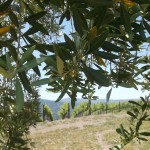 1,500 vineyard acres / AVA status in 2013
1,500 vineyard acres / AVA status in 2013
The new “Moon Mountain District of Sonoma County” lies east of Highway 12 and spans 17,663 acres, which includes 1,500 acres of commercial vineyards planted at elevations from 400 to 2,200 feet. The new appellation is located within the Sonoma Valley AVA, but the Moon Mountain vintners and growers have long wanted to distinguish their high elevation wines on the labels.
Where 1,500 acres of grapevines cling to thin, volcanic soils on ancient lava flows beneath craggy peaks, alternately basking in the sun and cooling in the crosswinds from the Pacific Ocean to the west, and San Pablo Bay to the south.
-
Northern Sonoma
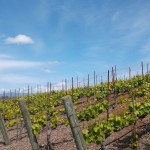
329,000 acres / AVA established in 1990
The area seems as vast and amorphous as its name, encompassing Chalk Hill, Knights Valley, Alexander Valley, Dry Creek Valley, Russian River Valley, and most of Green Valley within its embrace. The border follows Bohemian Highway in Monte Rio southeast along Dutch Bill Creek through Camp Meeker, Occidental, and Freestone, stretches along Highway 12 through Sebastopol to Fulton Road, turns north to River Road and from there traverses Mark West Springs Road to the Sonoma–Napa border.
Its north boundaries are formed by the county lines of Lake and Mendocino. The creation of this AVA was largely based on the petitioning of the E & J Gallo Winery as part of their expansion of their Gallo of Sonoma brand.
-
Pine Mountain – Cloverdale Peak
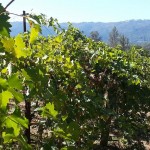
caption again and again and aiagihf dufhsudffgj ifb
230 vineyard acres / AVA status in 2011
The viticultural area is totally within the multicounty North Coast viticultural area and overlaps the northernmost portions of the Alexander Valley viticultural area and the Northern Sonoma viticultural area. The area currently has 230 acres of commercial vineyards, with another 150 acres under development.
The distinguishing features of the viticultural area include its mountainous soils, steep topography with high elevations, and a growing season climate that contrasts with the climate of the Alexander Valley floor below. The vineyards within the viticultural area generally are small (5-20 acre plots of flat or gently sloping ground). -
Rockpile
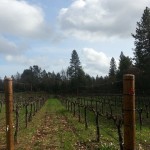 150 vineyard acres / AVA in 2002
150 vineyard acres / AVA in 2002
Spreading west of Lake Sonoma to the Mendocino County border, Rockpile is known for intensely-flavored red grape varietals with great concentration and balance. At elevations up to 1,900 feet, Rockpile is too far upland for the penetrating fogs that influence other Sonoma appellations. This exposes grapes to more California warmth and sunshine, boosting their ripeness and richness. The appellation is designated by altitude and geography.
Climbing up from the northern border of Dry Creek Valley, Rockpile Appellation’s dramatic nature unfolds. Pritchett Peaks loom in the distance, hinting at their role in Rockpile’s geologic evolution; the paved road drops away to gravel, revealing much about the tenacity of early homesteaders and current-day Rockpile Grape Growers. Stories of outlaw hide-outs, wild boar hunting and those killer Rockpile wines abound. -
Russian River Valley
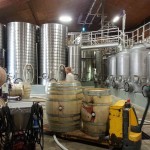 15,000 vineyard acres / 70 wineries / AVA status in 1983
15,000 vineyard acres / 70 wineries / AVA status in 1983
The Russian River Valley climate is sculpted by the regular intrusion of cooling fog from the Pacific Ocean a few miles to the west. Much like the tide, it ebbs and flows through the Petaluma Wind Gap and the channel cut by the Russian River through the coastal hills. The fog usually arrives in the evening, often dropping the temperature 35 to 40 degrees from its daytime high, and retreats to the ocean the following morning.
This natural air-conditioning allows the grapes to develop full flavor maturity over an extended growing season – often 15 to 20 percent longer than neighboring areas, while retaining their all-important natural acidity.
-
Sonoma Coast
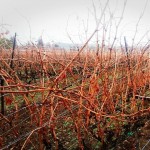 2,000 vineyard acres / 7 wineries / AVA status in 1987
2,000 vineyard acres / 7 wineries / AVA status in 1987
The Sonoma Coast AVA extends from San Pablo Bay to the border with Mendocino County. The appellation is known for its cool climate and high rainfall relative to other parts of Sonoma County. Close to the Pacific, with more than twice the annual rainfall of its inland neighbors, it can still be warm enough to ripen wine grapes because most vineyards are above the fog line. Pinot Noir and Chardonnay shine, along with cool-climate Syrah. The Petaluma Gap is also part of the SC AVA.
Much of Sonoma County’s most celebrated Pinot Noir and Chardonnay are grown here, yet few wines are actually made in the Sonoma Coast AVA, and several of its most distinctive sub-regions are not officially recognized AVAs.
-
Sonoma Mountain
 800 vineyard acres / 3 wineries / AVA status in 1985
800 vineyard acres / 3 wineries / AVA status in 1985
The 2,400-foot Sonoma Mountain range begins to rise above the town of Glen Ellen at the western edge of the Valley of the Moon. Found here are high-altitude, steep-sloped vineyards, with eastern exposures to catch the fog-free morning sun. These vineyards fall within the larger Sonoma Valley AVA. However, due to the unique hillside terroir, they are entitled to use the more specific designation of the Sonoma Mountain AVA. Powerful, yet elegant Cabernet Sauvignons – the appellation’s specialty – grow here on well-drained soils.
The irregular folds and crevices of the mountain slopes also create microclimates suitable for limited production of a diverse range of other varieties, including Chardonnay, Sauvignon Blanc, Semillon, as well as Pinot Noir and Zinfandel. -
Sonoma Valley
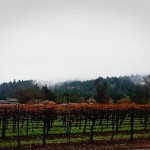 14,000 vineyard acres / 55 wineries / AVA status in 1981 (amended in ’85 & ’87)
14,000 vineyard acres / 55 wineries / AVA status in 1981 (amended in ’85 & ’87)
The Sonoma Valley AVA centers on the Sonoma Valley (also known as The Valley of the Moon) in the southern portion of the county. The appellation is bordered by two mountain ranges: the Mayacamas Mountains to the east and the Sonoma Mountains to the west. Along with being the area where so much of Sonoma County’s winemaking history took place, the area is known for its unique terroir. The Sonoma Mountains to the west help protect the valley from excessive rainfall.
The cool air that does affect the region comes northward from the Los Carneros region and southward from the Santa Rosa Plain. In general, the structure, rather than the composition of the soil, is the deciding factor where grape plantings are concerned.
Very nice, generous explanation.
Cheers!